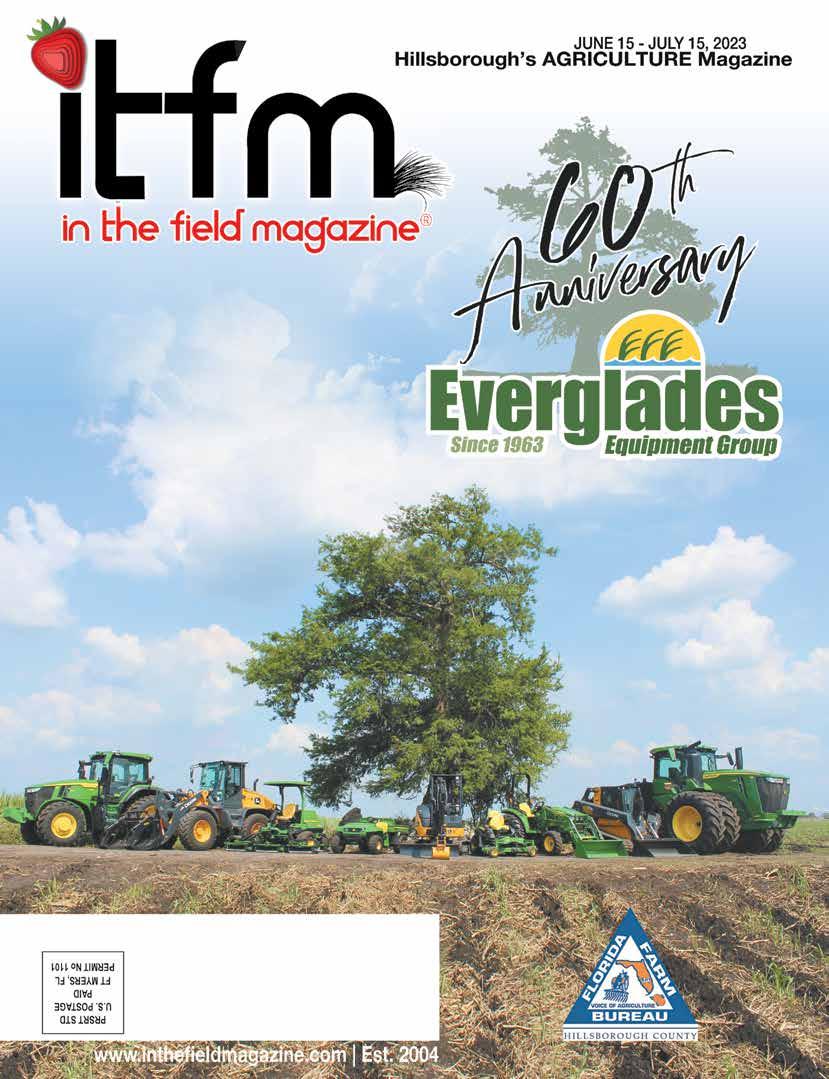






813-752-2379 Mon. - Sat.: 8 a.m. - 6 p.m. 3012 S. Jim Redman Pkwy. (Hwy. 39 S) Plant City, FL • southsidestores.com

WWW.INTHEFIELDMAGAZINE.COM INTHEFIELD MAGAZINE JUNE 2023 3 PAGE
EVERGLADES EQUIPMENT
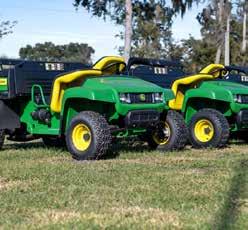
CELEBRATING
60 YEARS
PAGE 10
Endangered Species
PAGE 14
Teaching Garden
PAGE 16
Knife Making
PAGE 22
Rocking Chair
Chatter
PAGE 24
Michelle Williamson
PAGE 28
Landscaping
PAGE 30
News Briefs
Hey
PAGE 32
AgriTech
PAGE 35
Cotton Candy Grapes
PAGE 36
YF&R
PAGE 38
UV Light
PAGE 44
John Dicks
PAGE 46 Activity
PAGE 47
A Closer Look
PAGE 48
Harvest Award Nominations
PAGE 50
AG-Abilities
PAGE 56
From The Scientific Field
PAGE 58
Coffee Research
PAGE 60
Recipes
Hillsborough County Farm Bureau 305 S. Wheeler St. Plant City, FL.

Office Hours: Mon. - Fri. 8 a.m. to 5 p.m.
Insurance Services: 813-685-5673
Member Services: 813-685-9121
OFFICERS AND EXECUTIVE COMMITTEE
Dennis Carlton, Jr.....................President
Carl Bauman................Vice President
Tony Lopez..............Treasurer
Madison Astin Salter..................Secretary
DIRECTORS FOR 2021 - 2022
Dennis Carlton Jr, Carl Bauman, Madison A. Salter, Tony Lopez, Tiffany D. Randall, Jake Cremer, Brittany Coleman, Travis Council, Drew Futch, Rep. Lawrence McClure, Sammi Wilcox, Michelle Williamson, Casey Runkles, Gayle Yanes
Kaylee Poppell, Executive Director
813-685-9121
Farm Bureau Insurance Special Agents
Valrico Office
813-685-5673
100 S. Mulrennan Rd., Valrico, FL. 33594
Tommy Hale, CLU, ChFC, CASL, CPCU Agency Mgr. Julie Carlson, Amy Engle
Plant City Office
813.752.5577
305 S. Wheeler St., Plant City, FL 33563
Jeff Summer
Tampa Office
813.933.5440
6535 Gunn Highway, Tampa, FL.33625
Greg Harrell, Jared Bean
InTheField® Magazine
P.O. Box 5377 • Plant City, Fl. 33566-0042

*Winners will be notified by phone. You Too Can Be A Winner!
AGENCY MANAGER
Thomas O. Hale
WWW.INTHEFIELDMAGAZINE.COM INTHEFIELD MAGAZINE JUNE 2023 4 PAGE
CONTENTS
40
Readers!
and
Hidden somewhere in the magazine is a No Farmers, No Food logo. Hunt for the logo
once you find the hidden logo you will be eligible for a drawing to win a FREE No Farmers No Food Sticker. Send us your business card or an index card with your name and telephone number, the number of the page which you found the logo and where on the page you located the logo to the address below
June 2023 VOL. 19 • ISSUE 8








Letter from the Editor
It’s here! June 21 is the first official day of summer. What does that mean for us here in Florida? I guess it means hurricane season has been going on for 21 days. If a hurricane happens to head our way, there are things you can do to hopefully mitigate the damage.
• Clear your yard. Many things can become missiles when launched by hurricane-force winds.
• If you are in a direct path, cover up windows.
• Be prepared to turn off your electricity if the storm hasn’t already done it for you.
• Fill clean water containers for drinking water and bathtubs and sinks or other containers for washing.
• Fill up your gas tank.
• Have an emergency plan in place for your family and pets.

There are many other things you can do. Visit https://www.cdc.gov/disasters/ hurricanes/before.html to find out more.
As far as livestock is concerned, UF/IFAS has tips and tricks to help you prepare for and recover from disasters. For farm building they include:
• Securely close all doors and windows
• Nail doors and windows shut if necessary
• Cover large windows
• Brace large barn doors and weak walls
• Check that roof rafters are securely fastened to wall studding
There’s so much more to be done on a farm or ranch to prepare for hurricanes. Do some research ahead of time so you aren’t caught off guard.
Here’s hoping this hurricane season treats us well!
Until next month
Sarah Holt
Publisher/Photography
Karen Berry
Senior Managing Editor/ Associate Publisher
Sarah Holt
Editor
Patsy Berry
Sales
Karen Berry
Sarah Holt
Melissa Nichols
George Domedion
Creative Director/Illustrator
Juan Alvarez
Photography
Karen Berry
Melissa Nichols
Staff Writers
Al Berry
Sandy Kaster
James Frankowiak
Sean Green
Contributing Writers
Woody Gore
John Dicks
Social Media
Victoria Saunders
In The Field Magazine is published monthly and is available through local Hillsborough County businesses, restaurants, and many local venues. It is also distributed by U.S. mail to a target market, which includes all of the Greenbelt Property owners, members of the Hillsborough County Farm Bureau and Strawberry Grower’s Association.
Letters, comments and questions can be sent to P.O. Box 5377, Plant City, Florida 33563-0042 or you are welcome to email them to: info@inthefieldmagazine.com or call 813-759-6909
Advertisers warrant & represent the descriptions of their products advertised are true in all respects. In The Field Magazine assumes no responsibility for claims made by advertisers. All views expressed in all articles are those of the authors and not necessarily those of Berry Publications, Inc. Any use or duplication of material used in In the Field magazine is prohibited without written consent from Berry Publications, Inc.
gracious to you. - Numbers 6:25
Published by Berry Publications, Inc.
WWW.INTHEFIELDMAGAZINE.COM INTHEFIELD MAGAZINE JUNE 2023 6 PAGE
STAFF
The LORD make his face shine upon you and be
OUR PROFITS ARE YOUR PAYDAY
When you do business with Farm Credit, you are a member of a cooperative. When we do well, you do well. And we’ve been doing well for over 100 years.
Refinancing Buildings
Fences
Equipment
Loans for land, homes & living.


AGAZINE JUNE 2023 7 PAGE
Another Busy Month and Our Continued Thanks!
-Dennis Carlton Jr. - President
Greetings,
May was another month of important activities for Hillsborough County Farm Bureau – The Voice of Agriculture. And, once again our members helped to make all of them successful.

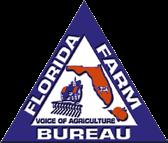

The future of agriculture rests with emerging agriculturists. We were pleased to hold an event for current and future members of our Young Farmers & Ranchers organization at Keel and Curley Winery. That’s a group of men and women aged 18 – 35 that represent the future of our industry and our leadership. There is more on that group and the many opportunities for involvement in this edition of In The Field.
Congratulations and “Thank You” to our member Michelle Williamson who was named Vice-Chair of the Southwest Water Management District Governing Board. She is an outstanding example of a leader within our community and industry and we are thankful for her involvement with Hillsborough County, Florida and American Farm Bureau!
Please mark your calendars for the night of October 5th. That is the date of our Annual Meeting and it will
HILLSBOROUGH COUNTY
be held at the TECO Expo Hall on the Florida Strawberry Festival grounds. More information will be available in upcoming editions of In The Field.
May also marked Ag Abilities, our half-day program for Exceptional Education Students, and continued outreach to our elected officials on behalf of agriculture. Here again, are our two initiatives that engaged our volunteers.
My thanks to these member volunteers who have made each of these initiatives occur. Without their support and involvement, little of this could have taken place. If you are not a member, please consider joining so that you can help us with our role as the “Voice of Agriculture” whether it is locally, statewide, or nationally. Please visit www.hcfarmbureau.org for more information about member benefits and opportunities for engagement.
Dennis Carlton, Jr.
Dennis Carlton Jr.
Dennis Carlton Jr. - President
Board of Directors
WWW.INTHEFIELDMAGAZINE.COM INTHEFIELD MAGAZINE JUNE 2023 8 PAGE 305 SOUTH WHEELER STREET • PLANT CITY, FL 33566 • 813-685-9121
Dennis Carlton Jr, President; Carl Bauman, Vice-President; Tony Lopez, Treasurer; Madison Astin Salter, Secretary; Tiffany D. Randall, Jake Cremer, Brittany Coleman, Travis Council, Drew Futch, Rep. Lawrence McClure, Sammi Wilcox, Michelle Williamson, Casey Runkles, Gayle Yanes

WWW.INTHEFIELDMAGAZINE.COM INTHEFIELD MAGAZINE JUNE 2023 9 PAGE
By Libby Hopkins
Cooley’s Water-willow
The Cooley’s Water-willow or the Justicia cooleyi as it’s known by its scientific name is an endangered plant.
Cooley’s water-willow is a rhizomatous perennial herb with upright stems that grow about 16 in tall. The lavender-rose flowers, which resemble small snapdragons, appear from August to December on forked, zigzag branches. The petals are fused into a two-lipped corolla. The slightly longer lower lip is mottled lavender and white; the upper lip is bright lavenderrose.


The species grows in a single Florida county, where it is found on moist, sand-to-clay soils in hardwood forests, often on limestone substrate. These forests include such trees as southern magnolia, black gum, sweet gum, live oak, pignut hickory, cabbage palm, and yaupon holly. The understory is mostly ferns, woodland grasses and sedge.
Cooley’s water-willow is only found on a portion of the Brooksville Ridge, an unusual region of the Florida peninsula noted for its extensive limestone outcrops and sinkholes. Surface streams are few, and most drainage is to ponds, prairies, and sinkholes. Some of the other rare Florida endemics occurring there are the federally Endangered Brooksville bellflower (Canpanula robinsiae) and two terrestrial nodding-cap orchids (Triphora latifolia and T. craigheadii), which also are candidates for federal listing.
Cooley’s water-willow was first collected in 1924 in a hardwood forest near Mascotte in Lake County. Until recently it was only found in Hernando County, Florida; one population was discovered in the early 1990s in Sumter County, Florida. The species is known to survive at ten sites, nine in northern Hernando County and one in Sumter County, Florida. Along with the Brooksville bell-flower, it occurs on federal property at an Agriculture Department research station. Other populations on public lands include those at the Chinsegut Nature Center, managed by the Florida Game and Fresh Water Fish Commission; along a state highway right-of-way; and at a Soil Conservation Service plant materials center. The Nature Conservancy also manages a preserve for Cooley’s water-willow. Nine of the ten known Cooley’s water-willow populations are found in one of the fastest growing counties in the nation. From 1980 to 1986 Hernando County grew by 74.8%; the U.S. Census Bureau dubbed it the nation’s fastest growing county. Figures from the 1990 Census confirmed that the trend continues; the proposed Suncoast Corridor toll road, part of a Tampa-Jacksonville corridor, would pass near Brooksville and encourage further population growth in the county. This rapid development has brought about greatly increased con-
version of hardwood forest habitat to agricultural use, quarries, and residential housing.
A number of the known populations of Cooley’s water-willow are on protected federal and state lands. The agricultural research station, which conducts beef cattle research, has not harmed the plant with its pasture management. The U. S. Fish and Wildlife Service (FWS) will continue to monitor the station’s pasture management and consult on any proposal to clear additional forest.
Managers of all state and federal land with Cooley’s waterwillow populations have been notified of its presence. In addition, The Nature Conservancy operates a private landholder notification program for this and other rare Florida plants.
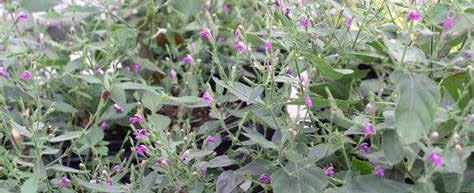
The 1994 recovery plan from the FWS, which describes necessary efforts to restore both the Cooley’s water-willow and the Brooksville Bellflower, notes that the primary objective for the plan is the eventual delisting of both species. The plan notes, however, that there is a fundamental lack of basic biological knowledge about these species, which makes it difficult to set criteria to determine the time frame or ultimate likelihood of delisting. Still, the plan states that delisting of both species should become feasible as habitat is protected and new populations are (re)established.
According to the 1994 plan, plausible criteria for recovery might include securing at least 15 viable and self-sustaining populations of Cooley’s water-willow, totaling at least 10,000 individuals. The major recovery actions outlined in the plan include the development of management and protection criteria for populations on currently managed areas; the acquisition of additional habitat, or protection of habitat through conservation easements and/or regulation; the completion of additional surveys to locate new populations; the augmentation of existing cultivated populations, including the establishment of a germ plasm bank; and the development of plans for possible (re)introduction of plants into sustainable habitat.
WWW.INTHEFIELDMAGAZINE.COM INTHEFIELD MAGAZINE JUNE 2023 10 PAGE
E ndang E r E d S p E ci ES
Reclamation ecologists like Ashlee work to return mined lands to productive use as wildlife habitats, public parks and more—so future generations can enjoy these lands for years to come.

®

WWW.INTHEFIELDMAGAZINE.COM INTHEFIELD MAGAZINE JUNE 2023 11 PAGE
With every generation, we get better at protecting our environment.


WWW.INTHEFIELDMAGAZINE.COM INTHEFIELD MAGAZINE JUNE 2023 12 PAGE

WWW.INTHEFIELDMAGAZINE.COM INTHEFIELD MAGAZINE JUNE 2023 13 PAGE
COMING TO FRUITION: Students reap real-life experience in Horticultural Sciences Teaching Garden


 By Stella Canfield
By Stella Canfield
Luminous yellow squash, bright red turnips and blooming artichokes are just a few of the crops that were grown this spring in the Horticultural Sciences Teaching Garden, an experiential learning garden for students. The flourishing fields sit south of Fifield Hall on Hull Road and reflect endless hours of science, dedication, and care.
In the field, students put knowledge into practice. Under the guidance of their professors, groups of students in the organic and sustainable crop production class design organic field systems to create their dream farm and later take home fresh, harvested produce to share with friends and family.
“The students really consider it their own farm. They design, monitor, and manage the plot themselves and respond to emerging problems by coming up with integrated and creative solutions,” said Xin Zhao, a professor in UF/IFAS horticultural sciences department who hosts her lab in the field as part of her organic and sustainable crop production class. But what’s unique about the student gardens is its proximity to UF/IFAS experts and facilities that allow students to dive deeper into the real-world practices of running a small farm.
“Just the other day, we pulled a young, wilted watermelon seedling from our field and walked it over to the UF/IFAS Plant Diagnostic Center where we were able to identify the infection,” said Zack Black, the farm manager of the student garden. “Within walking distance, students are able to seek answers to just about any plant-related problem and gain first-hand learning experiences.”
For example, students get hands-on experience with intercropping, or the practice of growing two or more crops in proximity to produce a greater yield. The practice also serves as a pest management tool and allows for less wasting of resources that otherwise wouldn’t be used by a single crop. Plants like buckwheat, sweet alyssum, and marigolds, for example, attract beneficial insects like parasitic wasps and pollinators. Not only does this invite predators of plant-eating
insects, but it also creates a sustainable, interdependent garden.
In the field, students also learn to create living ecosystems that mimic nature. Emma Turner, a student in Zhao’s class, recalled being surprised by random tomato plants growing in her group’s plot.
“I realized a lot of ‘volunteer’ plants, ones that grow on their own without intentional planting, were growing because of the remaining seeds from last fall’s plantings,” she said. However, Emma’s classmate, Ruby Noland, recognized that the garden’s decade-long usage of organic farming methods meant its soil had a lot of biodiversity and nutrition. The soil’s organic matter content has been boosted through years of intercropping and the use of compost, in addition to the planting of cover crops between seasons to maintain soil health.
“Right now, our soil has higher levels of organic matter content than conventional Florida soil,” she said. “The increased soil organic matter content helps overcome some major challenges associated with Florida’s sandy soils usually having less than 1% of organic matter content.”
While the gardens provide a safe space for students to experiment and put their knowledge to the test, the real charm is learning the story behind every fresh fruit and vegetable. “My favorite part is just seeing where food comes from,” Noland said. “I can see everything come to fruition.”
Stella Canfield
Stella is a public relations intern at UF/IFAS Communications and a senior at UF. She loves cats, gardening and writing. She can be contacted at stellacanfield@ufl.edu


WWW.INTHEFIELDMAGAZINE.COM INTHEFIELD MAGAZINE JUNE 2023 14 PAGE

WWW.INTHEFIELDMAGAZINE.COM INTHEFIELD MAGAZINE JUNE 2023 15 PAGE
JORDY THE KNIFE MAKER
By Libby Hopkins
Jordan Cox found a silver lining in the COVID-19 pandemic. Cox was a chef for many years and decided to make a change. “One can only make so many linguine and clam dishes before it ends up feeling like work,” Cox said. “So, I made the logical transition to the car business from 2015 up until the pandemic.”
Cox’s whole world fell apart when the pandemic hit. He got laid off from his car business job and he couldn’t fall back on his culinary career because all the restaurants shut down during the pandemic as well. “I was stuck,” Cox said. “You can say I hit the reset button pretty hard. I moved out of my highrise apartment, got rid of my expensive car, and moved into a 10x20 shed behind someone’s house in Lakeland on Lake Hunter. I started an apprenticeship with metals sculptor and blacksmith in Lakeland.”
Cox’s six-month apprenticeship was for free and he worked eight hours a day, five days a week learning how to be a blacksmith. This was the beginning of Cox’s business, Jordy the Knife Maker. “I started my business with stimulus checks I had received during the pandemic,” Cox said. “This is how all of this came about, like I said, I hit the reset button hard.”
The earliest iron artifacts, dating from about 4000 BCE, were made from meteoric iron and were therefore rare. Smelting iron from its ores came into general use about 1400 BCE in the Middle East.
During the next 500 years, iron began to displace bronze in the manufacture of weapons and tools. In Europe before the Middle Ages, iron was mainly a utilitarian metal, with only sec-
ondary efforts in decoration. Arms, armor, and firearms were often decorated, however, usually simply but sometimes with elaborate ornamentation.
During the Middle Ages, iron began to achieve wide uses for a variety of domestic needs. Ironclad doors offered an added degree of protection but also provided new opportunities for decoration. Chests wrapped in iron provided both security and beauty. Wrought iron gates, grilles, railings, and balustrades not only fulfilled a functional requirement for strong structures but also provided the artisan with a new means for expressing ornamentation in architecture.
From the 16th century, ironwork developed highly ornate designs, with scrolls, leaves, flowers, and interlaced patterns. As iron became more common, it found wider use in household utensils, fireplace implements, stoves, grates, pans, cauldrons, locks, and hardware. Lanterns, torch holders, candleholders, and chandeliers were also wrought from iron. Most ironwork was forged with a hammer and anvil until the 19th century when cast ironwork became common. (www.britannica.com/art/ironwork)
Cox has come a long way from his apprenticeship. He now has a building where he hosts knife-making classes. “There are not a lot of knife makers and a lot of people don’t know the value of blacksmiths,” Cox said. “I wanted to let people know the value of blacksmithing, so I decided to teach how to make knives.”
Cox’s knife-making class has taken off but not the way he expected “I have women buying classes for their husbands, boyfriends, sons or brothers,” Cox said. “I thought I would get


WWW.INTHEFIELDMAGAZINE.COM INTHEFIELD MAGAZINE JUNE 2023 16 PAGE
policemen, firefighters, or military coming to my classes but it’s women purchasing a class for their husbands or boyfriends, families, and couples looking for a unique experience.”
This has led Cox to focus on creating other blacksmithing experiences for his clients. “I’m now working on creating a knife-making class that will include a food pairing, this way couples or friends can have more of a unique experience when they come to my shop,” Cox said. “I’m also working with local homeschool groups in the area so that their children can come and learn about blacksmithing. It’s all about the experience of blacksmithing and learning about knife making.”


If you are interested in taking one of Cox’s classes, you can visit his website at WWW.JORDANCOXKNIVES.COM OR CALL 646-241-4263.


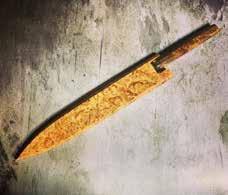


WWW.INTHEFIELDMAGAZINE.COM INTHEFIELD MAGAZINE JUNE 2023 17 PAGE
Tampa Bay Fishing Report June 2023

 Capt. Woody Gore
Capt. Woody Gore

Summer means hot and humid days, and June is no exception. Expect good fishing this month, but good fishing has a price - heat. Everything will be biting this month, so plan your trips now and take advantage of good summertime fishing. Remember that these hot days can dehydrate you, often to the dangerous point, before you realize what is happening. Most heat-related illnesses are preventable by keeping the body cool and avoiding dehydration in hot environments. Here are the symptoms: unconsciousness, seizures, difficulty breathing, confusion, vomiting and diarrhea, rapid heartbeat, and hot, dry, flushed skin without sweating.
Remember to drink plenty of fluids. Water and sports drinks do well in rehydrating bodily fluids. However, remember that some fluids containing alcohol will impair your decision-making while imposing safety issues on yourself and others. If you drink alcohol, do it "Responsibly" On the water, it is called BOI or Boating Under the Influence.
Snook
Snook fishing during the summer is almost a given. Practically every angler is looking to catch them, and given the amount of fishing pressure, especially on the weekends, it is a wonder they bite at all. Any mangrove shoreline will hold snook provided there is bait and structure because a snook is an ambush feeder. They find many meals from the shady mangrove root system lining Tampa Bay. Rocky shores and sandy bars also hold plenty of snook. Early morn-
ing flats produce well on topwater, and greenbacks always produce.
Redfish
June produces some good redfish days around the flats of Tampa Bay; look for heavy pushes and schools of mullet. To find redfish, you must cover lots of water. Once you find them, they do not venture too far from the bait they are chasing. And stay in the same area, especially while there is food. Bear in mind as long as there's food, there's fish. Live greenbacks and dollar-size pinfish work well and don't forget the old standby, shrimp.
Spotted Sea Trout
Trout fishing continues to remain strong through the summer along deep grass flats. Look for fair size fish on grass flats all over Tampa Bay. Live shrimp and greenbacks under a popping cork fit the bill nicely. But free-lined shrimp in sandy potholes might produce larger fish and an occasional flounder.
Cobia

Markers and sandy flats are good places for Cobia this month. They frequent markers, especially those holding bait. They also cruise the flats following a giant ray. When fishing markers, keep a chum bag over the side if they are in the area; they should come running, not to mention the giant Spanish Mackerel filling the bay this month. The large hidden dorsal fins can be dangerous if brought into the boat green. Anglers should always control the fish once boated.

WWW.INTHEFIELDMAGAZINE.COM INTHEFIELD MAGAZINE JUNE 2023 18 PAGE
Capt. Woody Gore (www.captainwoodygore.com)
Tarpon
Tarpon fishing comes alive in June. They are everywhere, from the beach to the bays, and they are hungry. Large Greenbacks, Threadfins, and crabs are abundant in the bay, and Tarpon loves them. Tarpon fishing around the Tampa area is excellent, north to the Courtney Campbell Causeway.

Other
Sheephead, Mackerel, Kingfish, Amber Jacks, Permit, Grouper, and Snapper, are doing well and will continue. Fishing around structure or one of the many fish attractors is an excellent place to start or watch your bottom machine as you cruise. Tampa Bay has an excellent deep water structure throughout, and you need to find it.
“Give Me a Call & Let’s Go Fishing”
813-477-3814
Fishing in Tampa Bay and Near Coastal Waters

Everything seems to be biting, depending on the tides. Snook, Redfish, Sea Trout, Mangrove snapper, Sheepshead, later season mackerel, and look for summer trout in deeper channels.
If you want to use my Charter Fishing Guide service, you can reach me or my son by calling our cell numbers Capt. Woody 813-477-3814 you can send an email to fishing@captainwoodygore.com

WWW.INTHEFIELDMAGAZINE.COM INTHEFIELD MAGAZINE JUNE 2023 19 PAGE


WWW.INTHEFIELDMAGAZINE.COM INTHEFIELD MAGAZINE JUNE 2023 20 PAGE Member FDIC 509 W ALEXANDER ST. | PLANT CITY, FL | 33563 Committed to Plant City. Staffed with bankers who have deep roots in the Plant City area, our bank’s focus for over 38 years has been to serve owner-managed businesses, professional firms, and families that want a strong, local connection with their bank and banker. Come grow with us. 813.707.6506 thebankoftampa.com
The top selling cereal in the United States is Cheerios, followed by Frosted Flakes.

First Lady Julia Tyler used the title “Mrs. Presidentress” when her husband, John, was the POTUS.
William Wrigley was in the baking powder business and gave a free pack of his gum with each box of his product. When he discovered that people were buying it just to get the gum, he decided to switch businesses.
If you take your age and multiply is by 7, then multiply it by 1,443 the answer repeats your age 3 times.

The nickname “john” for a toilet is in honor of Englishman John Harrington, who devised the first flush mechanism near the end of the 16th century.
The highest scoring word in Scrabble is oxyphenbutazone, with a potential total of 1,178 points.
The opening line to Jerome K. Jerome’s “Three Men in A Boat” starts: ‘There were four of us…’”
Most bees buzz in the key of A, but when tired they buzz in the key of E.
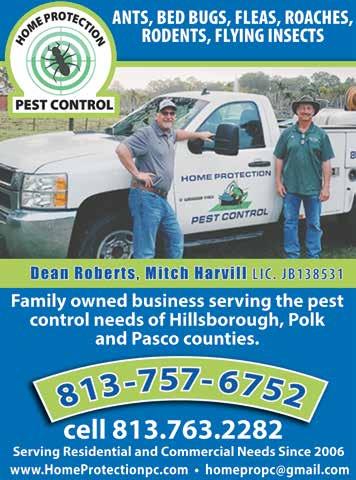


WWW.INTHEFIELDMAGAZINE.COM INTHEFIELD MAGAZINE JUNE 2023 21 PAGE
FAMILY OWNED AND OPERATED SINCE 1971

YOUR AROUND TOWN SPONSOR
As I child I often wondered why Grandma smiled all the time. In my later years I figured out why she smiled, because I have the same problem. She couldn’t hear a word they were saying.
Grandma and Grandpa went to church. Halfway through the service, Grandpa leaned over to Grandma and said, “I just let out a silent fart. What do you think I should do?” Grandma leans over and replies, “Put a new battery in your hearing aid.”
My Grandmother had a lot of wise sayings. One day I was in the kitchen with her and she said, “I’ll just give this a lick and a promise,” as she quickly mopped up a spill on the floor without moving the kitchen table and chairs.
“What is that supposed to mean,” I asked, envisioning someone licking the floor. “It means that I’m in a hurry and I’m busy canning tomatoes so I am going to just give it a lick with the mop and promise to come back and do the job right later.”
“A lick and a promise” was just one of the many old phrases that I remember my mother, grandmother, and others, using, that they most likely heard from generations before them. Many old phrases have become obsolete or even totally forgotten.
Below is a list that I have put together over the years:
• I have a bone to pick with you (a grievance to talk out)
• Bee in your bonnet. (focus on one thing)
• Cattywampus (Something that sits crooked such as a of piece furniture sitting at an angle.
• Been through the mill (had a rough time of it)
• Dicker (To barter or trade)
• Hold your horses (Be patient)
• Madder than an old wet hen (Really angry)
• No spring chicken (Not young anymore)
• Persnickety (Overly particular or snobbish)
• Straight from the horse’s mouth (privileged information from the one concerned)
• Kit and caboodle (the whole lot)
As Grandma said, “Hold your horses I reckon I’ll get this whole kit and caboodle done. Please don’t be too persnickety and get a bee in your bonnet because I am tuckered out. You know I ain’t no spring chicken!
And as for me as I write this column, I am going to give it more than just a lick and a promise.
One late afternoon a police car pulled up in front of Grandma’s house, and Grandpa got out. The polite policeman explained that this elderly gentleman said that he was lost in
WWW.INTHEFIELDMAGAZINE.COM INTHEFIELD MAGAZINE JUNE 2023 22 PAGE
Sponsored by:
HOPEWELLFUNERAL.COM
Editor’s Note: This Rocking Chair Chatter was originally printed in the June 2019 issue
the neighborhood park and could not find his way home. “Pop,” Grandma said, “You’ve been to that park for over thirty years! How could you get lost?” Leaning close to his wife’s ear so that the policeman could not hear, Grandpa whispered, “I wasn’t lost, I was just to tired to walk home.”
Grandma had a missed to a few Sunday sermons so the preacher stopped by her house to visit. As he sat on the couch he noticed a large bowl of peanuts on the coffee table. “Mind if I have few”” he asked.
“No, not at all.” Grandma said.
They talked for a while and as the preacher stood to leave, he realized that instead of eating just a few peanuts, he almost emptied the bowl. “I’m terribly sorry for eating all of your peanuts. I really just meant to eat a few.” The preacher said.
“Oh that’s alright,” Grandma said. “Ever since I lost my teeth, all I can do is suck the chocolate off them.”
A concerned grandpa went to a doctor to talk about his wife. He said to the doctor, “I think my wife is almost deaf because she never hears me the first time and always asks me to repeat things.” “Well,” the doctor replied, “go home and tonight stand about 15 feet from her and say something. If she doesn’t reply, move about five feet closer and say it again. Keep doing this so that we’ll get an idea of her hearing loss.”
Sure enough, the husband went home and did exactly as instructed. He started off about 15 feet from his wife in the kitchen as she was chopping some vegetables and said, “Honey, what’s for dinner?” He heard no response. He moved about five feet closer and asked again. No reply. He moved five feet closer, and still no reply.
He got fed up and moved right behind her, and spoke into her ear, and asked again, “Honey, what’s for dinner?” She replied, “For the fourth time, vegetable stew!”
I’ll leave you with Grandma’s nine important facts as you get older.
• Death is the number 1 killer in the world.
• Good health is merely the slowest possible rate at which one can die.
• Give a person a fish and you feed them for a day. Teach a person to use the Internet and they won’t bother you for weeks, months, maybe years.
• Health nuts are going to feel stupid someday, lying in the hospital, dying of nothing.

• All of us could take a lesson from the weather. It pays no attention to criticism.
• the 60’s people took acid to make the world weird. Now the world is weird, and people take Prozac to make it normal.
• Life is like a jar of jalapeno peppers. What you do today may be a burning issue tomorrow.
And Grandma’s favorite saying: “As you go through life one learns that if you don’t paddle your own canoe, you don’t go anywhere.
WWW.INTHEFIELDMAGAZINE.COM INTHEFIELD MAGAZINE JUNE 2023 23 PAGE
Watch the Weather, Wait to Water
Susanna Martinez Tarokh
Michelle Williamson Elected SWFWMD Governing Board Vice Chair
The Southwest Florida Water Management District is encouraging residents who irrigate their lawns to take advantage of the upcoming summer rainy season and “watch the weather, wait to water.”


During the summer months of June, July, August, and September, yards need no more than ½ to ¾ inch of water every two to three days. If your lawn has received enough water from rainfall, turn off the irrigation system and turn it back on when needed.
The simplest way to determine if your yard needs water is to look for these visual clues:
• Grass blades are folded in half lengthwise on at least one-third of your yard.
• Grass blades appear blue-gray.
• Grass blades do not spring back, leaving footprints on the lawn for several minutes after walking on it.
Follow these tips when you “watch the weather, wait to water”:
• If your yard is showing signs that it needs water, check your local forecast to see if rain is on the way.
• Use a rain gauge to determine how much rain your yard has received.
• If you have a rain sensor, make sure that it is working properly.
• Take full advantage of the rain. Make sure gutter downspouts are directed into landscaped areas or lawn.
• Install a rain barrel to capture excess rainwater.
For additional information, visit WaterMatters.org/WatchTheWeather.
By Jim Frankowiak
Michelle Williamson has been elected Vice Chair of the Southwest Florida Water Management District (District) Governing Board for the 2023 – 2024 term. Governing Board members are unpaid, citizen volunteers who are appointed by the Governor and confirmed by the Florida Senate. The Governing Board sets policy for the 16-county District whose mission is to protect water resources, minimize flood risks and ensure the public’s water needs are met.
Williamson, who represents Hillsborough County, was appointed to the Governing Board in December 2020 with her term expiring March 1, 2024. She previously served the Board from August 2016 to August 2020, during which time she held the offices of Treasurer and Vice Chair.
As operations manager of G&F Farms in Dover, Williamson oversees food safety and regulatory compliance programs, as well as the human resources department. Williamson has served as a board member for the Florida Strawberry Growers Association, Florida Farm Bureau State Board of Directors, and Hillsborough County Citizens Environmental Advisory Committee. She currently serves on the Hillsborough County Farm Bureau Board of Directors, Hillsborough County Agriculture Economic Development Council, and International Responsible Farming Council Board of Directors.
In addition, Williamson also has served as the state chair of the Florida Farm Bureau Women's Leadership Committee and the chair of the Florida Farm Bureau Women's Leadership Committee for District 5.

WWW.INTHEFIELDMAGAZINE.COM INTHEFIELD MAGAZINE JUNE 2023 24 PAGE

WWW.INTHEFIELDMAGAZINE.COM INTHEFIELD MAGAZINE JUNE 2023 25 PAGE


WWW.INTHEFIELDMAGAZINE.COM INTHEFIELD MAGAZINE JUNE 2023 26 PAGE

WWW.INTHEFIELDMAGAZINE.COM INTHEFIELD MAGAZINE JUNE 2023 27 PAGE
PLANTS THAT LOVE WET FEET
Lynn Barber, Florida-Friendly LandscapingTM agent, UF/IFAS Extension Hillsborough County

Many of us hope our rainy season will get started very soon. It has been rather dry for some time. We can capitalize on our upcoming moisture by planting lovely perennials that like to have wet feet. Yes, I know that plants do not have feet, but I’m referring to their roots. Five of my favorites include Swamp hibiscus, Cardinal flower, Muhly grass, Swamp sunflower and Wiregrass. These plants thrive in low areas of your landscape that retain water.

Swamp hibiscus, Scarlet rosemallow, Hibiscus coccineus, native to Florida and the southeastern United States, produces amazingly beautiful red flowers. We have this plant on the bank of our lower pond in the Bette S. Walker Discovery Garden, located in the courtyard of the UF/IFAS Extension Hillsborough County office. This plant can reach a height of 15 feet.
Cardinal flower, Lobelia cardinalis, is an aquatic perennial, sports tubular red flower that attracts and is dependent on hummingbirds for pollination. This is a native plant that can be propagated from seeds, cuttings, or division. This plant is poisonous to humans and livestock, so if you purchase and plant it, keep that in
mind. For more information, refer to Native Aquatic and Wetland Plants: Cardinal Flower.

Muhly Grass, Muhlenbergia capillaris, a native plant, reaches a height of 3 to 5 feet and a spread of 2 to 3 feet. It prefers full sun and can tolerate extreme drought and flooding. Muhly Grass has narrow foliage and produces pink fall flowers. This grass can be used as a border, accent, in mass plantings, and as cut flowers.
Swamp Sunflower, Helianthus debilis, another native, reaches a height and spread of 2 to 4 feet. It is fast growing, prefers full sun, and attracts butterflies and birds. It is a perennial that produces yellow/brown fall flowers. Plant in mass for a large pop of color and interest.
Wiregrass, Artistida stricta var. beyrichiana, a fast-growing native, can reach a height of 2 to 4 feet and spread of 2 to 3 feet. This grass can survive in well-drained to wet soil and prefers full sun. It produces year-round, tan flowers and provides food and cover for wildlife. To stimulate flower and seed production, wiregrass
WWW.INTHEFIELDMAGAZINE.COM INTHEFIELD MAGAZINE JUNE 2023 28 PAGE
Cardinal FLower
Swamp hibiscus
depends on regular summer burning. If this is an issue or concern, consider other grasses, such as Salt grass, Elliott’s lovegrass or Fakahatchee grass.


Additional information on each of these plants and more can be found at Ask IFAS plus the plant name.

There are several reasons to stop by our office. We have the eye-pleasing Bette S. Walker Discovery Garden, a lovely perennial garden and pollinator garden created by the Girl Scouts. There is a Master Gardener on duty who can answer your questions, and you can submit a soil sample for testing at a nominal cost. Please check our calendar of events at: http://sfyl.ifas.ufl.edu/hillsborough/upcoming-events/. If you do not live in Hillsborough County, please contact your local County Extension Service for information on programs they provide.
Contact: labarber@ufl.edu
This sprawling, 15-acre estate boasts a 4,085 SF custom ranch home with 4 bedrooms and 3 bathrooms. The concrete block, center aisle, 14-stall barn is an unbelievable find. Multiple board and field fenced paddocks, a round pen, and multiple riding areas make this a turn-key estate. As an added bonus, there is a 1,040 SF manufactured home serves as the perfect caretaker’s residence.
Sale Price: $1,890,000
Follow the tree-lined driveway back to the comfortable and cozy 2BR/2BA 1,620 SF Mobile Home surrounded by wideopen thriving pastures! With scattered oak trees, there’s just the perfect amount of shade leading you back to the quaint barn featuring its own front porch. With the barn and fencing, this property is ready to accommodate horses or other livestock animals.

Sale Price: $549,000

WWW.INTHEFIELDMAGAZINE.COM INTHEFIELD MAGAZINE JUNE 2023 29 PAGE
Fischbach Land Company 917 S Parsons Avenue Brandon, FL 3351 Information provided on properties is as accurate as possible. Fischbach Land Company does not guarantee the accuracy thereof. All parties shall conduct their own due diligence, research, inspection, and records to come to their own conclusions. 813-540-1000 FischbachLandCompany.com Florida Land Agriculture, Development, Commercial, Industrial, Country Estates Real Estate Brokerage Services Since 2008 Reed Fischbach, Licensed Real Estate Broker Blaise Lelaulu, Licensed Real Estate Associate Melissa Raburn, Licensed Real Estate Associate
Thonotosassa Equestrian Estate, Thonotosassa, FL 15± Acres
Quaint Country Estate, Lithia, FL 5 Acres
Ad-InTheField MAY2023.indd 1 6/6/23 8:52 AM
Swamp sunflowers
NEWS BRIEFS
 Compiled by Jim Frankowiak
Compiled by Jim Frankowiak
FDACS Seeking Woman of the Year in Agriculture Award Nominees
The Florida Department of Agriculture and Consumer Services (FDACS) is accepting nominations for the Woman of the Year in Agriculture Award. The deadline for nominations is August 1. To be considered for the honor, nominees must be at least 25 years old; actively involved in agriculture and residents of Florida for the last consecutive 10 years; possess a minimum of 10 years of agricultural industry experience; have demonstrated community involvement through professional and/or civic contributions, and have made unique or outstanding contributions to the agriculture industry.
Nomination forms for the honor are available at FDACS.gov.
Farm Bureau Foundation Fellows Launch Digital Skills and Ag Literacy Lessons
The 2023 Farm Bureau Foundation Fellows have launched four free Applied Digital Skills lessons dedicated to helping students learn about food, fuel, and fiber. The lessons were developed with support from Grow with Google to make digital skills and agricultural literacy more accessible to students nationwide with a focus on rural classrooms. The lessons are part of the Agriculture and Rural Communities Collection, which are available for free to educators in the U.S.
For more information, visit: agfoundation.org.
2023 Hurricane Season Predicted to be Slightly Below Average
Colorado State University (CSU) is predicting a “slightly below average” Atlantic Hurricane season in 2023. CSU is predicting 13 named storms with six becoming hurricanes and two of the six reaching major hurricane strength with sustained winds of 111-miles-per-hour or greater.

USDA Has $11 Billion Available for Clean and Affordable Energy, New Jobs and Healthier Communities
The U.S. Department of Agriculture (USDA) has nearly $10 billion available to eligible rural electric cooperatives to deploy renewable energy systems; zero emission and carbon capture systems. USDA will also make $1 billion available in partially forgivable loans to renewable-energy developers and electric service providers to help finance large-scale solar, wind, geothermal, biomass, hydropower projects and energy storage in support of renewable energy systems. More information on both programs is available at: www.rd.usda.gov.
USDA Announces Funding for Organic Growers

The U.S. Department of Agriculture (USDA) has announced new funding to strengthen the market for domestically grown organic goods, and to support producers seeking organic certification, both are part of the USDA’s Organic Transition Initiative. More information and application steps are available by contacting the USDA Plant City Service Center, 201 South Collins Street. Telephone: 813/752-1474.
How to Learn about GMOs
USDA NRCS Seeks Innovative Approaches to Urban Agriculture Proposals
The U.S. Department of Agriculture (USDA) Natural Resources Conservation Service (NRCS) in Florida will invest up to $1 million for Conservation Innovation Grants (CIG) for urban agriculture, water conservation, carbon sequestration, and soil health. The deadline for submitting proposals is July 14, 2023. For more information, visit: grants.gov and Conservation Innovation Grants – Florida Natural Resources Conservation Service (usda.gov).
“Feed Your Mind” is an agricultural biotechnology education outreach initiative launched by the U.S. Food and Drug Administration (FDA) in collaboration with the U.S. Department of Agriculture (USDA) and the U.S. Environmental Protection Agency (EPA) to help consumers better understand genetically engineered foods, commonly called GMOs or genetically modified organism. Information in both English and Spanish is available at: fda.gov/food/consumers/agricultural-technology.
Farm Bureau Speech Contest Entries Welcomed
The Hillsborough County Farm Bureau Women’s Committee is hosting the annual speech contest for students aged 14 –18. This year’s contest will be held on August 15th in Plant City at 6 p.m. This year’s topic is “How Have Supply Chain Issues Impacted Florida Agriculture.” Contact kayleepoppell@ffbf. org to register. More details on this competition are available at floridafarmbureau.org/wp-content/uploads/2022/12/ youth-speech-contest-packet-2923.pdf.
WWW.INTHEFIELDMAGAZINE.COM INTHEFIELD MAGAZINE JUNE 2023 30 PAGE

WWW.INTHEFIELDMAGAZINE.COM INTHEFIELD MAGAZINE JUNE 2023 31 PAGE
Florida Commissioner of Agriculture Speaks At 41st Annual AgriTech Trade Show
Commissioner of Agriculture and fifth-generation Floridian Wilton Simpson spoke at the 41st Annual AgriTech trade show in May at the Grimes Family Agricultural Center at the Florida Strawberry Festival Fairgrounds.


Simpson, a lifelong farmer who lived in a mobile home off Charlie Taylor Road in Plant City for several years in his youth, gave a recap of the highlights from the recent Legislative Session, including a bill that restricts foreign countries, including China, from purchasing property in the state, a tax package bill that prohibits a county from levying any special assessments on lands classified as agricultural and a bill that creates a Florida Farm TEAM (Tax Exempt Agricultural Materials) Card for farmers to use for sales tax-exempt purchases.
“This year was a banner year in the legislature, we’ve had quite a few wins,” said Simpson. “These laws are going to make it a lot easier for farmers to operate in this state.”
He also spoke about a $100 million increase to the Rural and Family Lands Protection Program that protects agricultural lands through the acquisition of permanent land conservation easements. “There are a lot of generational farmers in this state who want to continue to farm and want their families to be able to continue to farm in perpetuity,” he said. “This is going to ensure our long-term survivability in having enough land mass to produce the amount of food we need to support the growing population not only here in this state but in the world.”
AgriTech, hosted by the Florida Strawberry Grower’s Association, featured a trade show along with education sessions that address the challenges facing the agricultural industry.
“It was an honor and a privilege to have Commissioner Simpson here with us,” said Florida Strawberry Growers Association Executive Director Kenneth Parker. “He’s no stranger to this building because during the Florida Strawberry Festival, he likes to come out and support the youth, whether it’s the steer show or steer sale, it’s always good for him to come back and visit.”
Parker, while grateful for the strides the commissioner has made this year, hopes to see him address other issues facing
By Michelle Caceres
Florida farmers. “There’s a lot of streamlining that can happen and he could have some really good influence with duplicative inspections,” he said. “We need one inspection that will be honored by multiple agencies, not each agency doing the same inspection over and over, that costs time and money.”
Parker is also working with the commissioner’s office to advocate for the Florida Pesticide Certification Exam to be offered in Spanish. “For a lot of our pesticide applicators, English is not their native language so we’re working with his office to have Spanish language testing so they can obtain the needed certifications,” he said.
Simpson’s remarks also resonated with event attendees. “It’s wonderful that the agriculture commissioner will come to Hillsborough County and support the Florida Strawberry Grower’s Association,” said cattle rancher Dennis Carlton, Sr. “He has a farming background and he’s very supportive of Florida farmers.”
While Simpson and others are making strides to preserve Florida’s farming legacy, Carlton hopes the federal government will tackle the industry’s labor issues. The federal government recently increased fees of its H-2A visa program that allows employers to bring foreign nationals to the United States on a temporary basis to fill agricultural jobs. Florida also saw the largest wage increase, the hourly Adverse Effect Wage Rate (AEWR) went up 15.47% (from $12.41 to $14.33/ hour).
“The costs are continually going up and we’re being told they’re going to continue to go up,” he said. “The rate is set every year so you never know what that labor rate is going to be.”
In a statement issued at his swearing in ceremony in January, he shared his vision to secure the future of agriculture in Florida so it can continue to provide the safest, most abundant and affordable food supply in the nation.
“Florida’s agriculture and related industries are the quiet, and often overlooked giant of our economy- and it deserves the undivided attention of this office,” he said. “Agriculture is a national security issue and without a safe, affordable and abundant food supply, we can’t survive.”
WWW.INTHEFIELDMAGAZINE.COM INTHEFIELD MAGAZINE JUNE 2023 32 PAGE
ST. JOSEPH’S CHILDREN’S HOSPITAL FOUNDATION’S
JULY 1–28
Be a bright light for children like Leo during what can be an overwhelming time in their lives. Making a donation during the Christmas in July event is a way to give kids comfort and help them cope while they’re in the hospital.

You can help: StJosephsChristmas.org

ANNUAL
23-2808215-0523
Meet Leo Medulloblastoma patient, age 3

WWW.INTHEFIELDMAGAZINE.COM INTHEFIELD MAGAZINE JUNE 2023 34 PAGE
COTTON CANDY GRAPES

 By Sandy Sun, M.S. Clinical Medicines, B.S. Nutrition Science
By Sandy Sun, M.S. Clinical Medicines, B.S. Nutrition Science
Have you heard of cotton candy grapes? Available in some farmers markets and grocery stores, this newer type of white table grape is known for its sweetness. Cotton candy grapes were created and produced in California by cross-breeding popular types of grapes to create a sweet, firm grape. Some types of grapes are also grown in Florida. Muscadine and bunch grapes are the most common kinds that grow in the state. These juicy, sweet-tart, bite-sized berries are good for eating raw, as well as making wine or jam. Other popular uses include grape jelly in peanut butter sandwiches, raisins, and grape juice.
Nutritional Profile
Fresh cotton candy grapes are full of all the same vitamins and minerals as green and red grapes. This sweet, juicy fruit is considered a very good source of vitamin C, and a good source of vitamin A, dietary fiber, riboflavin, and potassium. The outer peel is entirely edible and contains most of the fiber in the fruit. According to the United States Department of Agriculture (USDA) National Nutrient Database for Standard Reference, one cup of fresh grapes (92 g) contains 61.6 calories, 0.58 g of protein, 0.32 g of fat, 61.6 g of carbohydrate, and 2.9 g of fiber. It also provides 33% of the Daily Recommended Value (% DV) for manganese, 6.1% for Vitamin C, 5.3% for thiamin, 5% for potassium, and 5% for niacin.
Full of disease-fighting antioxidants
Fresh grapes are bursting with antioxidants including vitamin C, manganese, carotenoids, resveratrol, and other phytonutrients. The highest concentration of these nutrients is found in the skin and seeds. Antioxidants help protect the body’s cell membranes from harmful free radical damage and lower markers of oxidative stress. Very importantly, the antioxidant and anti-inflammatory properties of grapes offer protection against cancer.
Resveratrol is a special phytonutrient that is believed to play a role in longevity. This compound has been positively linked to inhibiting cancer, heart disease, and viral infections. Found in muscadine and other grape varieties, resveratrol may also have anti-microbial and anti-hypertensive properties.
Antioxidants protect cell membranes from potential oxygen damage and inflammation. This decreases the risk of atherosclerosis and heart disease. Grapes, as well as grape juice and red wine, have been shown to play a role in reducing high blood pressure, reducing total and LDL cholesterol levels, decreasing inflammation and decreasing clumping of platelets (which may help prevent blood clots).
Grapes are considered an excellent source of manganese, an antioxidant that plays many important roles in the body. It helps keep bones strong, maintain normal blood sugar levels, and proper functioning of the thyroid gland. Manganese also helps the body utilize other nutrients such as vitamin C, thiamin, choline, and biotin.
How to select and store
Choose plump, firm grapes that feel heavy for their size and are still attached to the stem. Look for richly colored skin that is free of blemishes. Store grapes in a shallow container in the refrigerator. Rinse under cool running water before eating or preparing.
How to enjoy
Fresh cotton candy grapes are delicious and juicy eaten out of hand. They can be juiced or cooked into jelly or jam. Add grapes to cereal, yogurt, or salad, or use them to garnish and top cakes and desserts.

Enjoy fresh grapes today. In every juicy, sweet-tart bite is a load of great nutrition. For a list of u-pick farms and wineries in the state, go to Florida Grape Growers’ Association: ttp:// www.fgga.org/index.html
Selected References
http://www.whfoods.com
http://edis.ifas.ufl.edu/
http://www.fgga.org/index.html
http://www.fruitsandveggiesmorematters.org
WWW.INTHEFIELDMAGAZINE.COM INTHEFIELD MAGAZINE JUNE 2023 35 PAGE
YOUNG FARMERS AND RANCHERS EVENT
By Jim Frankowiak
Hillsborough County Farm Bureau’s (HCFB) Young Farmers & Ranchers (YF&R) recently held a gathering at the Keel & Curley Winery. The hostesses were recently elected YF&R Co-Chairs Brittany Coleman and Amber Boykin.

The event included a tour of the wine and cidermaking portions of the Keel & Curley operation, highlighting the source of blueberries in Florida and how their overall operation supports the state’s agricultural industry. Keel & Curley annually produces approximately 500,000 bottles of wine. In addition to participating in the tour and enjoying some Keel & Curley beverages, the attendees were given an overview of YF&R and the many opportunities the organization offers young farmers and ranchers between the ages of 18 – 35 at the local, state, and national levels.

“Among those opportunities is the chance to network, share ideas, participate in community projects and hone their leadership skills,” said HCFB Executive Kaylee Poppell. “Florida Farm Bureau has an array of opportunities for this group of young agriculturalists to become strong leaders for the future of agriculture.”
Florida Farm Bureau’s new District 6 Field Representative, Lauren Phillips, also discussed the YF&R Leadership Group which is currently seeking new members. “If anyone is interested, they should reach out to YF&R Co-Chairs Amber and Brittany or email info@hcfarmbureau.org for more information,” she said. They may also follow the YF&R page on Instagram: @hillsborough_yfr.
WWW.INTHEFIELDMAGAZINE.COM INTHEFIELD MAGAZINE JUNE 2023 36 PAGE







WWW.INTHEFIELDMAGAZINE.COM INTHEFIELD MAGAZINE JUNE 2023 37 PAGE
COMBINING UV LIGHT AND PREDATORY MITES
could help manage nasty strawberry pest, but there’s a caveat
By Brad Buck
Growers can use ultraviolet light and predatory mites to help control a pest that can severely damage strawberries, but new University of Florida research adds a cautionary note.
This integrated approach to managing twospotted spider mites comes as helpful information for growers in Florida’s $400 million-a-year strawberry industry. Farmers are trying to keep the spider mite at bay because it can cause significant damage to the Florida strawberry crop each year.
Sriyanka Lahiri, a UF/IFAS entomologist, first found that ultraviolet light can help thwart the twospotted spider mite.
Now, Lahiri has discovered growers can combine UV light with three predatory mite species to more efficiently keep the twospotted spider mite in check. But farmers must be careful.
For her new study, Lahiri wanted to find out what would happen if she used UV light on the eggs of predatory mites in the research field of the Gulf Coast Research and Education Center (GCREC). At the same time, Lahiri used UV to suppress spider mites.
She and her team found that the same UV doses that kill most spider mite eggs also kill almost 90% of predatory mite eggs. That’s bad news because those predatory mites won’t grow to adulthood, which means they cannot eat the spider mites. The key to controlling twospotted spider mites is to use UV lights, then release adult predatory mites.
“This research finding informs growers about the limitations of using UV light in combination with predatory mites,” said Lahiri, a faculty member at

WWW.INTHEFIELDMAGAZINE.COM INTHEFIELD MAGAZINE JUNE 2023 38 PAGE
The UV light technology that researchers are using to help thwart twospotted spider mites, a pest of strawberries. (Courtesy, Sriyanka Lahiri)
GCREC. “Using our new information, growers can protect the predators, while using UV light for maximum spider mite suppression.”



Twospotted spider mites use their piercing mouths to feed on leaves and can reduce strawberry yield by 10 percent to 25 percent, a worrisome loss for any grower. Most farmers spray chemicals on their strawberries to thwart the mites. But UF/IFAS scientists are trying to find ways to reduce growers’ use of miticides. That’s why researchers are studying integrated pest management methods to control the mites.
“These mites can build webs that protect them from many pest-management strategies,” Lahiri said. “Add to that their high reproductive rates, and the mites start reducing strawberry yield. This research helps combine physical and biological control strategies to help farmers avoid yield losses, without using miticide. For large-scale adoption of this technique, farmers can eventually use lightweight automated devices.”
WWW.INTHEFIELDMAGAZINE.COM INTHEFIELD MAGAZINE JUNE 2023 39 PAGE
Dr. Sriyanka Lahiri, a UF/IFAS assistant professor of entomology, shown in a strawberry field at the Gulf Coast Research and Education Center. (Courtesy, UF/IFAS photography)
EVERGLADES EQUIPMENT
“CELEBRATING A 60-YEAR COMMITMENT TO OUR CUSTOMERS’
 By Jim Frankowiak
By Jim Frankowiak
WWW.INTHEFIELDMAGAZINE.COM INTHEFIELD MAGAZINE JUNE 2023 40 PAGE
SUCCESS”
Everglades Equipment Group is celebrating its 60th anniversary and continues its commitment to integrity and assisting its customers to achieve success in their businesses. The company traces its beginnings in Florida to the early 1900s when Emanuel and Mary Schlechter, with their seven children, left the Upper Midwest after reading about the vast agricultural opportunities in Florida.
Third-generation family member Mike Schlechter, who is President and Managing Partner of Everglades Equipment Group, recounts how Emanuel, Mary, and their younger children remained in Belle Glade after traveling from North Dakota, while their older children moved to different areas of the country for work. “Those that stayed in Belle Glade were devastated by a hurricane that wiped out the community in 1928,” he said. “The older siblings returned and laid those who had passed in the storm to rest. An overturned tractor was the only item that remained on the Belle Glade homesite.”
The family continued its commitment to farming in the Belle Glade area, primarily growing sugar cane, which continues today. Walter Schlechter, his cousin Fritz Stein, and a local businessman Don Williams began a tractor repair shop in the late 1950’s. “John Deere approached the group a short time later and asked if they would be interested in selling their equipment in addition to the repair services. They accepted Deere’s offer and Everglades Farm Equipment was founded in 1963. Walter, my grandfather, then bought out his two partners in the early 1970s,” said Schlechter. “Since 1963, we have become one of John Deere’s premier dealers in Florida.” The original store in Belle Glade is still in operation today, and three generations of the Schlechter family are engaged in Everglades’ daily operations as well as the family farm.
Since 1963, Everglades Equipment Group has been at the forefront of innovation, bringing reliable, efficient, high-performance machines to farmers, ranchers, landscapers, and homeowners. “Our product range includes large and small


WWW.INTHEFIELDMAGAZINE.COM INTHEFIELD MAGAZINE JUNE 2023 41 PAGE
tractors, combines, hay tools, tillage and seeding equipment, compact construction equipment, lawnmowers, and more. We focus on delivering superior value to our customers through quality service in every aspect of our business. From making sure our customers find the most suitable equipment for their needs to helping maintain that equipment throughout its lifecycle, we are committed to their success. As a farming family, we understand what it takes to make a business successful,” said Schlechter.
Everglades Equipment Group has 18 dealership locations in Florida. They include the original operation in Belle Glade along with facilities in Boynton Beach, Brooksville, Fort Myers, Fort Pierce, Homestead, Immokalee, Largo, Leesburg, Loxahatchee, Naples, North Port, Odessa, Okeechobee, Orlando, Palmettto, Plant City and St. Cloud. Each site manager is expected to operate their location as though it was their own. Gary Noel, the Plant City site manager oversees all aspects of his location. He and his counterparts are also involved in their communities. “Community involvement includes everything from local shows and industry events as well as youth organizations such as 4-H, FFA, and athletic leagues,” said Noel. “If something is important to our customers, it’s important to us.”


Proper maintenance is essential to keeping equipment running at peak performance. “That is why

WWW.INTHEFIELDMAGAZINE.COM INTHEFIELD MAGAZINE JUNE 2023 42 PAGE
our service department is staffed with certified John Deere technicians who are trained to diagnose and repair all types of equipment,” said Schlechter. “Our team is equipped with state-of-the-art diagnostic tools to identify issues quickly and accurately, so our customers can trust their equipment is repaired correctly the first time.” Schlechter noted Everglades assembled a group of their best service technicians and has them operate from a call center for prompt and efficient service diagnosis. “We understand the need to diagnose and repair equipment problems as quickly and as costeffectively as possible,” he said.

Everglades also carries a wide variety of high-quality landscape supplies, including sod, rock, mulch and soil to help customers achieve the outdoor landscape of their dreams. Sod options include St. Augustine, Zoysia, and Bermuda varieties available on sod pallets for easy installation. The company also stocks a range of decorative and functional rocks, from river rock to granite enhancing any garden or landscaping project.
“Our selection of mulch options, including pine bark and cypress, provides an attractive and low- maintenance way to conserve moister and suppress weeds,” said Schlechter. “We are also a reliable source of sand and soil for landscaping projects from sand leveling to organic soil for planting.”

As to the future, Everglades Equipment Group will continue its commitment to customers, while staying cutting edge on technological advances and incorporating those advances into the equipment and services they offer. “Should growth opportunities present themselves to us, we will certainly take advantage of them,” Schlechter said.
Congratulations Everglades Equipment Group on 60 years of service! For more information, visit: www.evergladesfarmequipment.com.

WWW.INTHEFIELDMAGAZINE.COM INTHEFIELD MAGAZINE JUNE 2023 43 PAGE
High Hopes For Hurricane Season
by John Dicks
When we’re lucky enough to live in our great State of Florida, one thing for certain is that we are always attuned to anything with the word “Hurricane” attached.
Whether it’s spoken on tv, printed online, or just overheard in conversation, the “H” word is one of those that just grabs you by the eyes and ears and demands that you pay attention.
That’s particularly so in June when the season technically starts.
Just when we’re warming up to the idea of some hot, humid, and sticky summer weather, the National Hurricane Center comes along with its official forecast of likely storms, all of which snaps us back into reality and bursts our bubble of beach time serenity.
So it was again when we recently learned the outlook, delivered with drab statistics which would otherwise disguise the dire warnings if a monster storm did develop and actually blow its fearsome breath our way.
The good news is that this season of storms is supposed to be better, and less intense than last year. It’s being called a “near normal” year.
Though that might sound good, it makes you wonder whether a sigh of relief is really warranted. After all, storm chances may be down this year, but if a hurricane hits home, we can find no solace by saying we were set for a just “near normal” year.
In case you missed the numbers, here’s what our friends at the National Oceanic and Atmospheric Administration (NOAA) consider “near normal.” They predict that we have “a 40% chance of a near-normal season, a 30% chance of an abovenormal season, and a 30% chance of a below-normal season.
I don’t know about you, but as for me, such description fails to deliver on the “rose-colored glasses” that we’d like to wear to make certain our summer is a bit more carefree.
Delving deeper into the numbers, NOAA suggests that this season we could worry through a range of 12 - 17 named storms (with winds of 39 mph or higher), and that some five to nine will develop into hurricanes (winds of 74 mph or higher).

Of those, at least one, and as many as four, will be major hurricanes (category 3, 4, or 5; with winds of 111 mph or higher).
The strange thing, though, is that NOAA admits to only a 70% confidence in these predicted ranges. It means, of course, that the odds are also 30% that forecasters could be absolutely and totally wrong!
It all sort of makes you want to say, “Thanks, NOAA, we appreciate that valuable insight!”
Nonetheless, and as an interesting side note, the folks at NOAA can say, and with total and complete confidence, that the name of the first 2023 Atlantic storm shall be Arlene.
How the list of names is created I have no idea. A whole alphabet of storm names gets produced each year, but strangely, the list includes only 21 names. I guess that’s fine if we really do have 17 or fewer storms as predicted.
Regardless though, and for some unknown reason, they assign no names to the letters Q, U, X, Y, and Z. Hopefully we won’t need them for naming storms this year, but surely we could find suitable names to attach to the letters just so as not to leave them out.
Personally, I like Quintilla for a name in the first unclaimed spot. Quintilla Bruton did lots of great things for Plant City, including pioneering our library (which was later named after her). I understand, too, that she was a force to be reckoned with, making it perfectly suitable as a name for a hurricane.
Quintilla was also gracious and kind, which should make any hurricane so named one that would show the decency to leave all destruction behind and simply stay offshore.
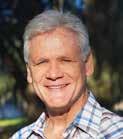
Indeed, that’s what we’re hoping for the entire Hurricane Season.
John Dicks is both a Lawyer and Businessman, including an interest in farming. He and his family have owned a Blueberry Farm and have Agricultural lands which they lease for cattle operations, as John says, “to someone who knows and handles cattle much better than I do!”. John is both a Gator, having received his undergraduate degree from the University of Florida, and a Seminole, with his Law Degree from Florida State University. John serves as Of Counsel to Trinkle Redman, a law firm in Plant City where he also served nine years as City Commissioner, including three terms as Mayor.
WWW.INTHEFIELDMAGAZINE.COM INTHEFIELD MAGAZINE JUNE 2023 44 PAGE













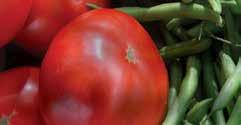


WWW.INTHEFIELDMAGAZINE.COM INTHEFIELD MAGAZINE JUNE 2023 45 PAGE The Food Safety Modernization Act (FSMA) Produce Safety Rule (PSR) inspections have begun. Sign up now to request a free On-Farm Readiness Review (OFRR), offered in partnership by the Florida Department of Agriculture and Consumer Services and University of Florida IFAS. The OFRR is an educational opportunity to help individual farms align practices with the PSR regulatory requirements in preparation for inspections. For more information on FSMA and to sign up for an OFRR, visit FDACS.gov/FSMA or call (863) 578-1900. To take full advantage of the OFRR and for PSR compliance, one farm representative should first attend a Produce Safety Alliance Grower Training. Upcoming trainings can be found at: crec.ifas.ufl.edu/extension/events This publication is supported by the Food and Drug Administration (FDA) of the U.S. Department of Health and Human Services (HHS) as part of a financial assistance award U2FFD007446 totaling $1,166,732 with 100 percent funded by FDA/HHS. The contents are those of the author(s) and do not necessarily represent the official views of, nor an endorsement, by FDA/ HHS, or the U.S. Government. for a FREE On-Farm Readiness Review Sign up
A Closer Look Leather Strop

Naturally Amazing Activities
by
Sean Green
Father’s Day is almost here so this month we’re doing a project that might work as a quick Father’s Day gift. A leather strop is a traditional means of keeping his favorite knife or straight razor sharp. There are different styles of straps made; some have canvas or denim glued to the rough side of the leather, leaving the smooth side for a fine finish. In the interest of simplicity, our project will only use three pieces of leather. We are using a thick leather strap two and a half inches wide, but if you have an old belt lying around that is fairly wide, this is a great project for repurposing that old belt. The tools used for this activity are suggested to make things easier, but this project can certainly be done without special tools. In its simplest form, a leather strop can be little more then a strip of leather glued to a piece of wood or fashioned with a hole with which to hang it from a nail.
Supplies:
10 oz Leather Strap 2 ½ inches wide about 25 inches long
Leather scraps for a handle and ring
Fabric Glue (for leather)
C-Clamps
Scrap Wood (for clamping leather)
Production:
Leather Knife or utility razor
Edge Beveller or skive tool
Stitching Groover or Border tool

Steel Leather Stamp
Burnishing tool or wooden dowel
Sandpaper
Create a paper pattern for the handle and cut two matching pieces of leather (to be glued together)
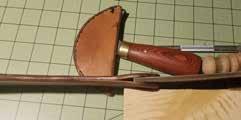


Create a paper pattern for the ring holder and cut one piece of leather to be folded (to be glued together)
Spread glue on both the handle and the key ring, clamp leather between wood, let dry for at least an hour.
** (Leave about an inch unglued, it will later be glued to the leather strap) **
Dampen the sides of the leather, one item at a time (Handle, Key Ring holder, strap) and bevel the edge of the leather
with either an edge beveller, skive tool, or razor.
Dampen the sides of the leather and burnish with wood until the leather is smooth and shiny. Heat (more than pressure) is what we are after when burnishing. Wet and work in small sections.
When burnishing is complete, decorate the ends (not the main strap) by carving a grooved border with the stitching
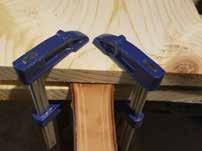
Expensive leather conditioners are not necessary to maintain the leather strop, inexpensive shoe cream (not polish) will keep the strop in good shape for decades if used regularly (once or twice per year).
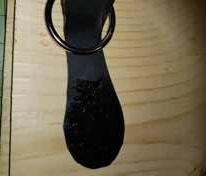
WWW.INTHEFIELDMAGAZINE.COM INTHEFIELD MAGAZINE JUNE 2023 46 PAGE
groover or use a stamp tool to stamp designs and edges into the leather. Glue and clamp the handle and key ring holder to the ends of the leather strap, allow at least an hour to dry.
Closer Look
Florida Intertidal Firefly (Micronaspis floridana)

Many of our readers are native Floridians or have lived here for decades and remember when fireflies were a common sight in the evening. I remember when they seemed nearly as abundant as love bugs and never having to “look” for them because they were always visible in the yard during the summer nights. It seems the days of finding them in my own yard will remain a fond memory. In Florida, we have over 50 species of fireflies, many of which can still be seen in areas that have not yet suffered the disturbing influx of people relocating to Florida and consequential light pollution that limits the natural range of the firefly. Unfortunately, we have some species that are likely to become extinct entirely. This month we will take a closer look at the intertidal firefly (Micronaspis floridana) while this rare Florida treasure still exists.
Fireflies are not actually flies, but rather, beetles. It is a beetle known as the Florida Intertidal Firefly. This species is special because it is the only known species in the New World that inhabits salt water. True to the common name, it is found only in the intertidal zones of a short list of coastal salt marshes of Florida and a few northern islands of the Bahamas. The ideal habitat for this species is the mangroves, mudflats, and salt marshes we would normally associate with fiddler crabs and for that reason, these beetles are sometimes known as Fiddler Crab Fireflies.
Micronaspis floridana is a nocturnal member of the Lampyridae family of beetles and is related to click beetles and soldier beetles. The scientific name for this family of beetles comes to us from the Greek word “lampein” which means “to shine.” It is not the only beetle that shines with bioluminescence; there are over 2,000 species of fireflies worldwide and about 60 species in Florida alone.
The larva of the M. Floridana beetle is often called glowworms because they glow with bioluminescence just like the adults do. Larva can be found foraging for snails and slugs, along the high tide mark.
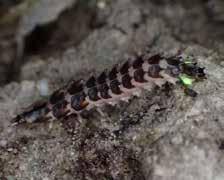
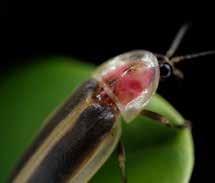
As adults, the glow is used to attract mates. The fireflies begin signaling 45-90 minutes after sunset. Males will announce themselves with short flashes every few seconds and females will respond with a long glowing flash lasting up to a minute sometimes synchronizing their response in small groups of three or four females. Though adults are active all year, they are most active from March through May.
The flash of the firefly is what fascinated me most about them as a child. I was one of those kids that caught them in a jar and could spend hours looking at them before finally releasing them again. The flash of the firefly is without question, the most important behavioral feature of this awe-inspiring beetle and critical for its survival. If fireflies can not see the glow of a potential mate, mating will not occur; and if mating does not occur, extinction is an inevitable consequence.
Unfortunately, local extinction of this species has already occurred throughout its historic range and the population that
still remains has been fragmented to only seven known locations. There is reasonable concern that this fragmentation will not provide for the genetic biodiversity necessary for the species to survive. Coupled with the quality of the remaining locations suffering the impact of coastal development, light pollution, and increasing pesticide use, this species has been classified as endangered on the IUCN Red List, an authoritative source of detailed extinction risk of animal, fungus, and plant species.
I used to casually wonder why we don’t see as many fireflies in our neck of the woods as we used to. I no longer have to wonder because recent published studies provide the explanation. According to the state’s Office of Economic and Demographic Research and the latest Census Bureau data, more than 300,000 residents per year have relocated to Florida from other states since 2020 breaking records that date back to the 1940s and 1950s and bringing our Florida population to over 22 million.
In 2021 the International Union for Conservation of Nature (IUCN) published an assessment of the Florida intertidal firefly (Micronaspis floridana) and acknowledged it is to be considered “Endangered” and acknowledged that increasing pesticide use and habitat destruction are a major factor in this species diminishing populations however, light pollution may be the biggest culprit and this species is expected to continually decline.
Light pollution is a consequence of human population increases. As more people relocate to Florida, more light pollution results. Demand increases exponentially with every new resident for lighted consumer resources such as roadways, shopping centers, night-time entertainment, and more. The firefly can not compete with the light we produce with modern technology and consequently, has no option other than to migrate to a locale with less light pollution or perish and that’s exactly what is happening.
Although this species is listed as a “Species of Greatest Conservation Need” in Florida’s State Wildlife Action Plan (FFWCC 2012), to date there are no known conservation regulatory actions in place for this species. In March of 2023, the Xerces Society for Invertebrate Conservation petitioned Deb Haaland, Secretary, US Department of Interior to list Micronaspis floridana as an endangered species under the US Endangered Species Act, and a response is expected by June. By the time we reach the projected consequence of extinction, it will be too late for change and the species will transition from a natural wonder to a chapter in a natural history lesson. When you are out and about along coastal Florida this month, take a closer look for the intertidal firefly and if you don’t mind lending a helping hand you can get involved in citizen science efforts to report and track sightings of the intertidal firefly through the Firefly Atlas, (https://www.fireflyatlas.org/).
WWW.INTHEFIELDMAGAZINE.COM INTHEFIELD MAGAZINE JUNE 2023 47 PAGE
A
by Sean Green PHOTO CREDIT: Richard Joyce / Xerces Society
2023 Harvest Award Nominations Now Open
Know an individual that’s been an outstanding asset to the agricultural community? Or perhaps an organization that’s gone above and beyond to promote agriculture in Hillsborough County and Florida? If so, now’s the time to nominate them for the 2023 Harvest Awards, to be presented on November 2nd, the opening day of the Hillsborough County Fair. Harvest Awards Committee Chair Randy Sears said, “We’re looking for outstanding individuals and groups to join the distinguished recipients of the coveted Harvest Awards from previous years. Individuals may nominate in a number of specific categories, including Farm Family of the Year, Lifetime Achievement in Agriculture, and Outstanding Woman in Agriculture, among others,” said Harvest Awards Committee Chair Randy Sears.
Award categories also include Outstanding Agri-Business; Urban Agriculture or Agriculturalist;
Outstanding Public and Community Service; Outstanding Farmer, Rancher or Nurseryman; as well as Posthumous Memorial awards and Friends of the Fair.

These awards offer an opportunity to recognize the vast array of agricultural activities in Hillsborough County, which ranks as the third-largest agricultural county in the state of Florida.
Applications for the awards are available on the Hillsborough County Fair website: https://hillsboroughcountyfair.com under 2023 Fair - Applications must be received by the Fair no later than July 15, 2023. Presenting sponsor of the event is Mosaic Co. and all luncheon attendees will receive gift bags with numerous agricultural commodity items. For further information, contact the Fair at
WWW.INTHEFIELDMAGAZINE.COM INTHEFIELD MAGAZINE JUNE 2023 48 PAGE
(813) 737-FAIR(3247).

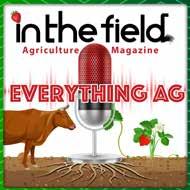


WWW.INTHEFIELDMAGAZINE.COM INTHEFIELD MAGAZINE JUNE 2023 49 PAGE Everything Ag Everything Ag Everything Ag Everything Ag Everything Ag Everything Ag Everything Ag Everything Ag Everything Ag Everything Ag Everything Ag Everything Ag Everything Ag Everything Ag Everything Ag Everything Ag Everything Ag Everything Ag Everything Ag Everything Ag Everything Ag Everything Ag Everything Ag Everything Ag Everything Ag Everything Ag Everything Ag Everything Ag Everything Ag Everything Ag Everything Ag Everything Ag Everything Ag Everything Ag Everything Ag Everything Ag Everything Ag Everything Ag Everything Ag Everything Ag Everything Ag Everything Ag Everything Ag Everything Ag Everything Ag Everything Ag Everything Ag Everything Ag Everything Ag Everything Ag Everything Ag Everything Ag Everything Ag Everything Ag Everything Ag Everything Ag Everything Ag Everything Ag Everything Ag Everything Ag Everything Ag Everything Ag Everything Ag Everything Ag Everything Ag Everything Ag Everything Ag Everything Ag Everything Ag Everything Ag Everything Ag Everything Ag ITFM “ Everything Ag” Podcast! @InTheFieldMagazine Find it on www.inthefieldmagazine.com or listen Spotify | Google | Apple | Amazon NEW EPISODE
and son
and
Grove Equipment Service, Inc
In this episode get to know David & Robby McKeeman father
duo
owners of
AG-ABILITIES ATTRACTS 45 PARTICIPANTS

 By Jim Frankowiak
By Jim Frankowiak
Forty-five students from five Hillsborough County schools attended Ag Abilities at the Florida State Fairgrounds last month. The event, which has been hosted by Hillsborough County Farm Bureau at the fairgrounds since 2001, is a half-day competition allowing volunteers to interact with Exceptional Education Students (ESE) in a variety of contests designed to teach them about agriculture and its importance.
This year’s competition focused on animals, plants and My Plate/Nutrition. Many of the students also took part in the Tractor Driving opportunity, as well. Students were asked to identify animal breeds and equipment, plant varieties and tools along with completing My Plate activities related to nutrition and serving sizes.
“We are especially grateful to the more than 30 volunteers and partners that helped make Ag Abilities possible,” said Hillsborough County Farm Bureau Executive Director Kaylee Poppell. “Those volunteers came from Farm Bureau’s District V, Plant City FFA, the Florida Strawberry Growers Association (FSGA), Grove Equipment Services and Hillsborough County 4-H as well as other individuals who gave their time.
“Thank you, too, to the Florida State Fairgrounds for hosting us, FSGA for providing lunch, Grove Equipment Services for providing the tractors and J&R Nursery in Dover for donating plants for the contest.”

WWW.INTHEFIELDMAGAZINE.COM INTHEFIELD MAGAZINE JUNE 2023 50 PAGE





WWW.INTHEFIELDMAGAZINE.COM INTHEFIELD MAGAZINE JUNE 2023 51 PAGE

WWW.INTHEFIELDMAGAZINE.COM INTHEFIELD MAGAZINE JUNE 2023 52 PAGE


WWW.INTHEFIELDMAGAZINE.COM INTHEFIELD MAGAZINE JUNE 2023 53 PAGE Auto Services “We Are A FULL SERVICE Garage” 3159 Hwy. 60 East 3 miles east of Brandon Serving Brandon Since 1971 www.brandonautoservices.com (813) 689 - 8255 • Body Shop • Used / Reman Transmission • Engine Diagnostic / Tune Up • Maintenance/Repairs • CV Axles • Drive Shafts • AC Repair • Alternator / Starter • Brakes Inc. GUARANTEED USED PARTS • Large selection of Used Tires • New and Used Glass Installed 2 Year Part Replacement & Labor Guarantee! Gladstone Land is actively acquiring farms in Florida. We offer owners and farmers three options: 1. We buy farms and provide long-term leases to the farmer. 2. We buy land that farmers would like to farm, but not own. 3. We buy farms with leases in place or can be leased. Please contact Bill Frisbie at Gladstone Land: (571) 334-8403 bill.f@gladstoneland.com | www.GladstoneFarms.com WE BUY FARMS






WWW.INTHEFIELDMAGAZINE.COM INTHEFIELD MAGAZINE JUNE 2023 55 PAGE
FROM THE SCIENTIFIC FIELD
The new president of the University of Florida has experienced corn rash, led an agriculture subcommittee of the U.S. Senate, and sent a daughter to a ranch to spend a month caring for cattle and driving a tractor.

So though I am not surprised that Dr. Ben Sasse is interested in agriculture, I saw it as a good sign that he accepted my invitation to visit Hillsborough County and Southwest Florida to learn about how UF supports Florida farming and how he can, too.

We got a preview of Sasse’s vision when he chose the UF/IFAS College of Agricultural and Life Sciences for his very first UF commencement address. He told the graduates: “Our world needs a Silicon Valley of agriculture, and we want to make sure that that’s in Florida, built by you….”
I showed him where we at UF/IFAS are building it, at the Gulf Coast Research and Education Center in Balm. We talked about our plan to build a Center for Applied AI in Agriculture. The visit to Hillsborough County confirmed his view that in agriculture, Florida is the future.
The future is now. New faculty members Dana Choi and Kevin Wang, hired for their expertise in artificial intelligence, demonstrated how they’re applying technology in ways that save growers labor, money and environmental impact. Nathan Boyd showed him a smart sprayer that applies chemicals only to weeds, not to the crop, and how he is helping drive an ethic among faculty that goes beyond innovation to commercialization—getting tech tools into growers’ hands.
We were also able to show Sasse that scientists, elected leaders and producers are allied in this quest to keep Florida farmers in business with innovation that gives them an edge in a competitive global market.
Sasse was accompanied by longtime Hillsborough County ag leader Kenneth Parker, who knows GCREC and its faculty so well that he was a de facto tour guide.
And a who’s who of Florida agriculture leadership converged on GCREC on that Saturday to show that even with 300 commodities, the Florida agriculture community speaks with remarkable coherence and consistency. Florida Farm Bureau
President Jeb Smith, Florida Fruit & Vegetable Association
President Mike Joyner, and Florida Cattlemen’s Association
Executive Vice President Jim Handley were among those from whom Sasse heard.
The Hillsborough visit also gave Sasse a chance to spend time
with an elected leader who is also a producer and is delivering some of the resources we need to provide the science that underpins the state’s second-largest industry. Commissioner of Agriculture Wilton Simpson was with Sasse at GCREC and at a cattle ranch in Manatee County on a two-day tour that also included a visit to research fields in Immokalee.
Sasse has the mind and the heart for agriculture that I believe bodes well for Florida farmers.

For the past 10 years, Sasse has been a policy leader in the U.S. Senate, placing agriculture at the center of our national interests. He sees agriculture as a way to protect our sovereignty by growing our own food while also advancing our global interests through what he has called agricultural diplomacy.
He can connect with farmers as well as policy wonks. He doesn’t pretend to be a farmer, but he can talk about his first job as a 7-year-old “walking beans” (Nebraskans’ way of saying weeding a field) and later “graduating” to detasseling corn (and getting corn rash).
It’s not just nostalgia. The future hit close to home on this trip. Sasse brought his 12-year-old son Breck, who injected a citrus trunk, picked tomatoes and worked the controls of a robot. We have a president who thinks about tomorrow—and how we’ll feed people when it comes.
WWW.INTHEFIELDMAGAZINE.COM INTHEFIELD MAGAZINE JUNE 2023 56 PAGE
Scott Angle is the University of Florida’s Vice President for Agriculture and Natural Resources and leader of the UF Institute of Food and Agricultural Sciences (UF/IFAS).

NOW BREWING: COFFEE RESEARCH IN FLORIDA
by Kirsten Romaguera
The United States is consistently among the top coffeeconsuming nations in the world, largely importing its favorite beans from South American countries such as Brazil and Colombia.

University of Florida researcher Felipe Ferrao says the Sunshine State could become a global hub for coffee research. That’s why he’s leading studies into the caffeinated beverage and the plants that produce it.
“We have the laboratory expertise to determine the full genetic makeup of different coffee varieties,” Ferrao said. “The University of Florida also has an ongoing artificial intelligence initiative, so combine this with our access to the HiPerGator supercomputer, and we could lead the way in improving coffee production and flavor.”
Will it grow?
The first project’s scientific question is a very basic one, Ferrao said. For the past year, scientists have grown about 150 coffee plants in a greenhouse on UF’s Gainesville campus, and the plants are about to be exposed to Florida’s elements.
Felipe Ferrao in a Gainesville campus greenhouse with young coffee plants (in foreground). (photos by Cat Wofford, UF/IFAS)

“It’s a simple ‘yes’ or ‘no’ answer we’re seeking in this first phase,” said Ferrao, who splits his time with blueberry research as part of the UF/IFAS Blueberry Breeding Program team. “Determining what will grow is the first step to identifying the plants most adaptable to Florida’s conditions.”
Researchers obtained the Arabica and Robusta seeds from a Puerto Rican collaborator, Puerto Rico Coffee Roasters, because the territory is one of the few U.S. locations that has found success growing the plants. Now, the small plants are destined for three fields: one near Gainesville, another at
the UF/IFAS Indian River Research and Education Center (IRREC) in Fort Pierce, and the final at the UF/IFAS Tropical Research and Education Center (TREC) in Homestead. Planting is planned in the coming weeks, weather permitting.
Coffee drinkers prefer Arabica beans for their superior flavor and aroma, Ferrao explained, but the plants are less productive than Robusta varieties. Arabica plants are also more susceptible to the challenges of climate change in the regions where they have long been produced.
Florida’s climate won’t necessarily make for more favorable growing conditions, though. The North Florida plants will grow in containers under high tunnels, in the hopes that the young plants can be protected from any potential freezing temperatures. Plants in the Central and South Florida locations will be in the ground in open fields.
“As an exploratory analysis, we should see some level of success or failure in each field by the end of this year,” Ferrao said. “Our follow-up questions will be to understand the behavior of the plant in these new conditions; then the flavor of what we can grow here in Florida; and finally, maybe most importantly, whether it can be profitable as a crop.”
The project is funded by the UF/IFAS Research SEEDIT Program, which supports research in emerging agricultural enterprises. Ferrao has collaborators in Gainesville and across the state: Jonathan Crane, a horticultural scientist and associate director of TREC; William Hammond, a plant ecophysiologist in the agronomy department; Patricio Munoz, a horticultural scientist who leads the Blueberry Breeding Program, and the program’s lab manager Werner Collante; Márcio Resende, a horticultural scientist who leads the Sweet Corn Genomics and Breeding lab; Lorenzo Rossi, a horticultural scientist who leads the Plant Root Biology Laboratory at IRREC, and
WWW.INTHEFIELDMAGAZINE.COM INTHEFIELD MAGAZINE JUNE 2023 58 PAGE
Felipe Ferrao in a Gainesville campus greenhouse with young coffee plants (in foreground). (photos by Cat Wofford, UF/IFAS)
postdoctoral researcher Guilherme Locatelli in the same lab; and Ali Sarkosh, a horticultural scientist who primarily studies stone fruits and grapes.
Prioritizing flavor
Simultaneously, though, Ferrao is already looking into the flavor of coffee varieties, although not from plants grown in Florida.
A project called “DeepFlavor: Using Artificial Intelligence to predict and understand flavor preferences” combines traditional consumer sensory panels with deep learning technologies. The work is being incorporated into existing breeding programs, like blueberries, to identify the chemical components that match what consumers indicate they enjoy.
Each booth at the UF Sensory Laboratory is equipped with a computer, where panelists are asked to rate the food or beverage on a scale from 1-9, based on individual preference, with directives regarding features like bitterness, sweetness, texture, etc. In Ferrao’s DeepFlavor project, researchers added webcams to each computer for select tests, starting with a coffee panel held in March. The cameras capture the panelists’ expressions in a quick series of photos in the moments after the product is tasted. The images are never seen by a human but instead go straight to the HiPerGator for analysis, using a model Ferrao trained.
“I don’t want to claim that this is going to be the new way to do sensory panels,” Ferrao said, “but I can see a future that combines the traditional with this new technology.”
Most interesting in the first round of the coffee test is that panelists ranked a Robusta variety highly. Of the nine total and three Robusta options offered to the March panelists, a Robusta finished second overall.

“For years and years, Robusta was considered bad coffee –grows well, high caffeine content, but its wide diversity of flavors was not explored,” Ferrao said. “Well, we can now say that almost 300 consumers on this panel did not agree. Some Robusta growers are focusing on quality, and both specialists and regular consumers are recognizing it. Now, we’re trying to understand the chemical and genetic attributes that make consumers say they enjoy it more.”
This may be important to the coffee-growing research, even though the projects are not directly linked, as Ferrao suspects Robusta varieties may grow most successfully in Florida conditions.
The DeepFlavor project is funded by a UF/IFAS Dean for Research program called “Launching Innovative Faculty Teams in AI,” or LIFT AI. Other scientists involved are Munoz, Resende, microbiologist Raquel Dias, food scientist Charles Sims and horticultural scientist Denise Tieman.

Finding genes behind flavor
Ferrao is a statistical geneticist and works with the University of Florida’s HiPerGator supercomputer.
Flavor from brewed coffee beans is complex, Ferrao said, and it’s complicated by the fact that scientists did not consider genetic information in previous breeding efforts. That’s the third project currently underway.
“We know the environment it grows in is super important, how the beans are harvested, how they’re roasted, how they’re brewed,” he said. “But the genetic profile creates the chemicals that determine flavor in the end product.”
Ferrao partnered with scientists at Instituto Capixaba de Pesquisa, Assistência Técnica e Extensão Rural (Incaper) in Brazil – a leader in coffee research – and his lab received leaves and green coffee beans from Arabica and Robusta plants grown in Brazil. In their initial research, recently published in Crop Science Society of America’s journal, “The Plant Genome,” the scientists noted that improvements in Robusta varieties could be accelerated using breeding methods informed by genetic sequencing.
“Coffee production needs to adapt to a changing climate, and knowing the plant’s full genetic profile could hold the keys to that,” he said. “Down the line, we could find the traits that cause the plant to thrive and others that make for a preferred flavor and aroma, and the potential is wide open for breeding.”
As these projects continue, Ferrao predicts each one will inform the next. There could be a Florida-grown coffee tested on the sensory panel, or the development of new genomic tools that can accelerate the selection of favorable traits.
“Coffee is a bit of a social phenomenon in America, and its future is at a critical point,” Ferrao said. “This work is a new frontier.”
WWW.INTHEFIELDMAGAZINE.COM INTHEFIELD MAGAZINE JUNE 2023 59 PAGE
Ferrao is a statistical geneticist and works with the University of Florida’s HiPerGator supercomputer.
Recipes

Courtesy of the Florida Department of Agriculture and Consumer Services. Chef Justin

Florida Citrus and Yogurt Cake
 Timineri
Timineri
Ingredients q q
2 Florida oranges, 1 zested and 1 sliced thin
2 Florida grapefruit, 1 zested and 1 sliced thin
4 Florida Key limes, 2 zested and 2 sliced thin
2 ½ cups Florida sugar
1 cup plain (whole fat) Greek yogurt
1 stick unsalted butter, softened
6 eggs, room temperature
1 tablespoon pure vanilla extract

3 cups all-purpose flour
½ teaspoon baking soda
Pinch of sea salt
PREPARATION
Preheat oven to 325 degrees. Zest 1 orange, 1 grapefruit and 2 Key limes into a small bowl and set aside. Slice the other half of the citrus into thin rounds and set aside. In a large bowl, cream butter and sugar until light, fluffy, and pale yellow in color. Add vanilla and eggs one at a time, blending thoroughly after each egg. In a separate bowl combine the flour, baking soda, and salt. Add the dry ingredients to the creamed mixture, alternating
Florida Guacamole

Ingredients q q
2 Florida avocados, pit removed and mashed
1 Florida tomato, diced small
2 Florida Key limes, juiced
¼ red onion, diced small
2 tablespoon fresh cilantro, roughly chopped
½ teaspoon cumin
Several dashes hot sauce (optional)
Sea salt and fresh ground pepper, to taste
PREPARATION
Mix all the ingredients together in a large bowl and stir to combine. Taste and adjust seasoning as needed. Store in an airtight container in the refrigerator.
with the yogurt. Mix until combined, being careful not to over-work the batter. Gently fold in the citrus zest. Pour into a well-oiled bundt pan or two loaf pans. Bake for 1 hour and 15 minutes or until a toothpick comes out clean. Cool for 30 minutes. Using a plate or cake stand, place the sliced citrus around the outer edges, overlapping as you go. Gently unmold the cake and place on top of the sliced citrus. Serve warm or room temperature.
WWW.INTHEFIELDMAGAZINE.COM INTHEFIELD MAGAZINE JUNE 2023 60 PAGE
You don’t have to go far for extraordinary care.
You can count on BayCare in Hillsborough County. You’ll find all the care you need, close to home. We have a wide range of services and facilities to meet all the health care demands of the community. Whether it’s primary care, emergency care or anything in between, you always get extraordinary care from BayCare.
BayCare in Hillsborough County
7
Outpatient centers
n Two BayCare HealthHubs®
n Two BayCare Outpatient Centers
Publix Walk-In Care kiosks
BayCare Medical Group offices
n Twenty-six primary care practices
n Forty-four specialty care practices
n Four hospitalists/palliative care providers
BayCare Urgent Care centers
n Three BayCare Kids Specialty Centers Outpatient imaging centers
n Bloomingdale
n Carrollwood n New Tampa BayCare Urgent Care Occupational Health Centers
Home care services that expand across the entire county
n Tampa
n Valrico
Rehabilitation centers
n BayCare HealthHub (South Tampa) Physical Therapy and Sports Rehabilitation
n St. Joseph’s Hospital Outpatient Rehabilitation Center
74 Hospitals
6 6 2

Laboratories BayCare HomeCare
n South Florida Baptist Hospital Outpatient Rehabilitation Center
n South Florida Baptist Hospital Outpatient Rehabilitation Center at the BayCare HealthHub
n South Florida Baptist Hospital Pediatric Outpatient Rehabilitation Center
To discover all the BayCare locations near you, go to BayCareInHillsborough.org or scan this code.

n St. Joseph’s Hospital
n St. Joseph’s Children’s Hospital
n St. Joseph’s Women’s Hospital
n St. Joseph’s Hospital-North
n St. Joseph’s Hospital-South
n South Florida Baptist Hospital
23-2807175-0523
5 14 10 12
n
n
n Riverview
South Tampa
Town ‘n’ Country
BUILDING SUPPLIES
METAL ROOFING
Thousands of 8ft. & 10ft. sheets. In Stock. Prices from $6 and up. Custom lengths available. 813-752-7088 ask for Ferris
ALUMINUM
We have all your aluminum needs! Screen Room, carports & awnings. Call Blake (813) 752-3378
WINDOW SCREENS
We make window screens of all sizes available in different frame colors. Call Ted(813) 752-3378
CABINETS
All wood kitchen cabinets. All wood vanities. Custom made to your size. Call Chris 813-752-3378
VINYL SIDING
Many colors and styles to choose from. Ask for Ted. 813-752-3378
MOBILE HOME SUPPLIES
Everything you need under ONE roof! Call Blake 813-752-3378 NEW, USED & ABUSED.
CALL FOR A WINDOW QUOTE.
We are a MI Windows dealer. Our windows are energy star, lifetime warranty. Call Broke & Poor 813-752-3378
FARM EQUIPMENT
I4 POWER EQUIPMENT
Trade-Ins Welcomed, Service Department
Available. Exit 22 • S. Frontage Rd. Plant City 813-752-4459
JOHN DEERE
Looking for your new tractor?
Come see us at Everglades Farm Equipment. evergladesfarmequipment.com
2805 SR 60 West, Plant City 813-737-1660

OVERSTOCK SPECIAL
Barn doors starting at $80.00 Call Ted 813-752-3378
2005 JOHN DEERE 2210
23hp, 4x4 tractor with loader and 62" mid mount mower. 341 hours.
$12,500 Call Alvie today! 813-759-8722
MALETTI ROTARY TILLER
With 8’ roller. $10,000 or best offer. Call 813-634-1162
1989 JOHN DEERE
770 2 wd tractor with 5' mid mount mower. $3,750 ask for Alvie. 813-759-8722
2008 MAHINDRA 4110
41hp, 4x4 tractor with loader. 1100 hours. $13,500 Call today, ask for Alvie. 813-759-8722
CITRUS PACKING HOUSE
Citrus packing house equipment for sale. Mikey Fertilizer Spreader, two wind machines. Call 863-324-2833
USED BALDOR-RELIANCE
Used 7.5 HP pump motor and 119 gal. holding-tank. Call LLCA 813-382-8382
FOR SALE
OLD ANTIQUE BLUE STOVE
Bread warmer, chrome trim. You have got to see it to believe it! Call Ted for more details. 813-752-3378
DOORS & WINDOWS SPECIAL ORDER
No upcharge. House & Mobile Home. Many standard sizes in stock. Ask for Blake. (813) 752-3378
KITCHEN CABINETS & VANITIES
Get quality all wood cabinets for less than the BIG Box STORES! Call Today! Ask for Blake. (813) 752-3378
JOBS
MECHANIC NEEDED
Agricultural equipment. Pay with benefits based on experience. Call David 863-537-1345 or Alvie 813-759-8722
PARTS COUNTER HELP
Wanted for parts look up and sales. Experience in the agriculture equipment service. Speak with Alvie. 813-759-8722
LAWN EQUIPMENT/ SUPPLIES
USED HUSQVARNA
Lawn tractor with 48" deck. Bagging system included. In good condition.
$995.00 Call Alvie 813-759-8722
USED ZERO TURN
Zero turn mowers, several to choose from. Call Alvie 813-759-8722
WANTED
WANTED OLD FISHING TACKLE
Wood lures, Bamboo fly rods, Bagley lures. Any old fishing collectible stuff. Call 863-559-8520
PRODUCE
FRESH PRODUCE
Forbes Road Produce. Open everyday from 7:30am - 8pm. Forbes Rd. & I-4 @ exit 17. Come out and see us!
MISC.
FREE Wooden Shipping Pallets
All sizes! Call Alvie 813-759-8722
24 HOUR SERVICE
Coggins Plumbing licensed • bonded • Insured. www.cogginsplumbing.com 813-643-7173
FARM BUREAU INSURANCE

We have you covered! Call us today. 813-752-5577
ALAN’S AIR CONDITIONING
Residential, Commercial Sales SVS & Repair. Legendary service for over 20 years! 813-752-0821
SHOWER STALLS - FIBERGLASS
Scratch and dent shower stalls - fiberglass perfect for hunting camps. $150 you pick! Call us! 813-752-3378
FOR RENT
Millcreek Pine Bark Row Mulcher. For blueberry farms, six yard, PTO drive need at least a 30hp tractor. Call 863-604-2526 for rental details.
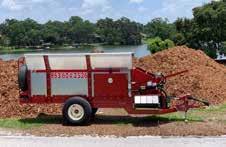
WWW.INTHEFIELDMAGAZINE.COM INTHEFIELD MAGAZINE JUNE 2023 62 PAGE Info@inthefieldmagazine.com Classifieds Tel: 813.759.6909 TRADE • BUY • SELL? Since 2004 In The Field has been Hillsborough and Polk Countys #1 Agriculture Magazine. Call Us at 813-759-6909 to place your Ad Today!
Follow Us on Instagram @inthefieldmagazine Follow Us on Facebook @inthefieldmagazine
Access In The Field Magazine, anywhere! www.inthefieldmagazine.com • Current Issues • Back Issues • And More.
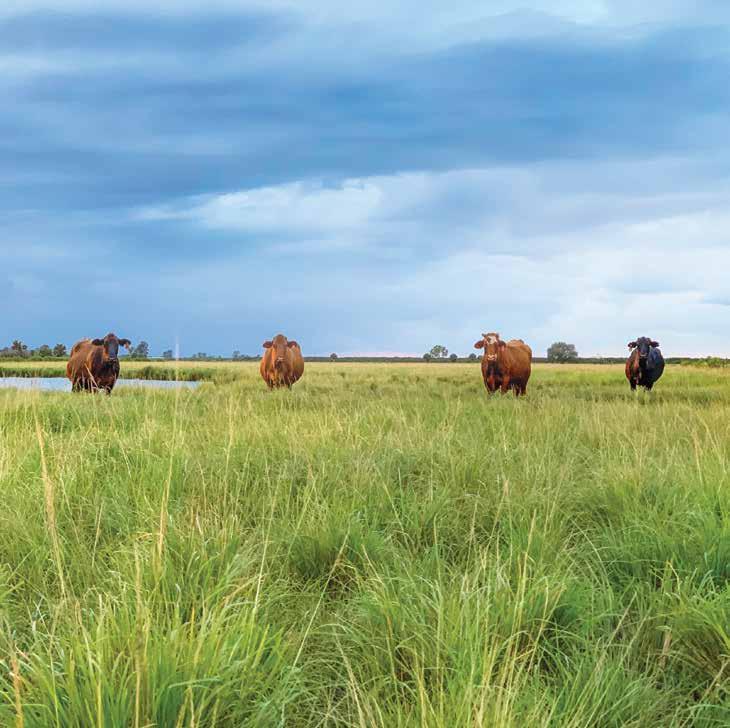
WWW.INTHEFIELDMAGAZINE.COM INTHEFIELD MAGAZINE JUNE 2023 63 PAGE Cover More Ground with CKP Let CKP Help You Protect Your PRF Our PRF specialists are trained to help you analyze complicated insurance data so you: • Protect your land and livelihood against potential losses during times of drought. • Make the most informed decision for your business. Why now? • Very affordable – Government subsidized • Premiums are not due until October 1 • No adjusters needed • No claim forms • Protects your cash flow “Anyone can sell you a policy. But CKP invests the time to understand your individual needs and develop a strategy that will produce the best coverage results.” The USDA Risk Management Agency helps protect your Pasture, Rangeland, and Forage (PRF) from the elements. 877-CKP-INS1 ( 877-257-4671 ) ckpinsurance.com CONTACT YOUR CKP PRF SPECIALIST TODAY

WWW.INTHEFIELDMAGAZINE.COM INTHEFIELD MAGAZINE JUNE 2023 64 PAGE





































 By Stella Canfield
By Stella Canfield













 Capt. Woody Gore
Capt. Woody Gore





























 Compiled by Jim Frankowiak
Compiled by Jim Frankowiak









 By Sandy Sun, M.S. Clinical Medicines, B.S. Nutrition Science
By Sandy Sun, M.S. Clinical Medicines, B.S. Nutrition Science














 By Jim Frankowiak
By Jim Frankowiak




































 By Jim Frankowiak
By Jim Frankowiak

























 Timineri
Timineri







